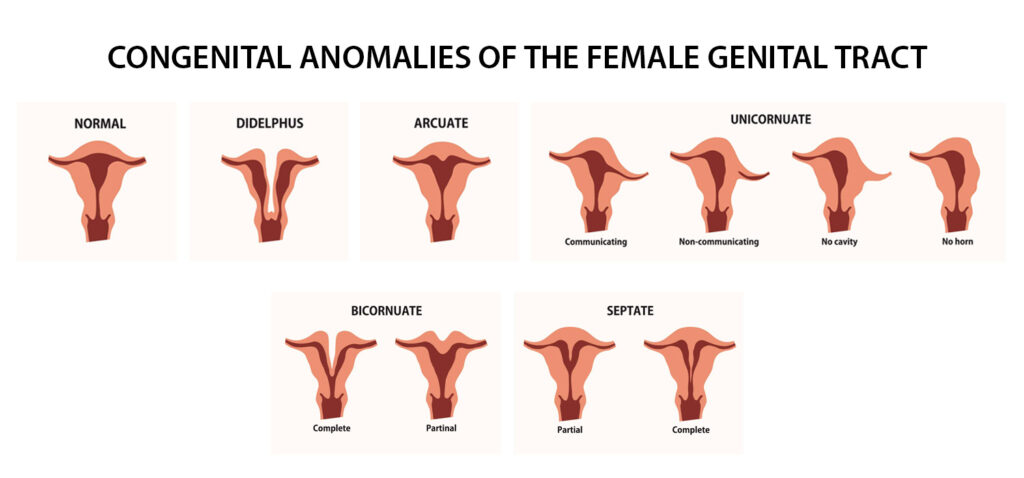Müllerian Congenital Anomalies: Insights into Women's Reproductive Health
Mullerian congenital anomalies, also called Mullerian duct anomalies or uterine anomalies, are problems with how a woman's reproductive organs develop before birth. These issues can affect the uterus, cervix, fallopian tubes, and vagina.
What Are Müllerian Ducts?
Müllerian ducts are structures in a female fetus that eventually form the uterus, fallopian tubes, cervix, and the upper part of the vagina. If these ducts develop normally, they form a healthy reproductive system. However, if there’s any disruptions in their development, it can lead to various structural abnormalities.
- Uterus Didelphys (Double Uterus): In this condition, the ducts develop separately, resulting in two separate uterine cavities. Each may have its own cervix, and sometimes there may even be a double vagina.
- Bicornuate Uterus: Here, the uterus has two cavities that are connected at the bottom. It looks heart-shaped, and the top of the uterus is indented.
- Septate Uterus: A septum (wall) divides the uterus into two parts. This wall can range in thickness and can sometimes reach down to the cervix.
- Unicornuate Uterus: Only one Müllerian duct develops fully, resulting in a uterus with a single cavity and one fallopian tube. This can make the uterus look smaller and can lead to complications during pregnancy.
- Agenesis or Hypoplasia: This means the uterus, cervix, or upper part of the vagina may be underdeveloped or missing entirely.
How Do These Anomalies Affect Health?
- Menstrual Problems: Some anomalies can cause painful periods or irregular bleeding.
- Fertility Issues: Women with Müllerian anomalies might find it harder to get pregnant or carry a pregnancy to term. Miscarriages and preterm births are more common.
- Complications During Pregnancy: Depending on the type of anomaly, there can be a higher risk of complications like breech birth, where the baby is not positioned head-down.
Diagnosing Müllerian Congenital Anomalies
Often, these anomalies are discovered when a woman experiences menstrual irregularities, recurrent miscarriages, or has trouble getting pregnant. Doctors may use various imaging techniques like ultrasound, MRI, or hysterosalpingography (an X-ray of the uterus and fallopian tubes) to diagnose these conditions.
Treatment Options
- Surgery: Some anomalies are treated by surgery. For instance, doctors often remove the septum in a septate uterus to create a single uterine cavity.
- Fertility Treatments: For women who have trouble getting pregnant, assisted reproductive technologies like IVF (in vitro fertilization) can be helpful.
- Symptom Management: Medications or other medical treatments can relieve pain and manage other symptoms
Living with Müllerian Anomalies
Many women with Müllerian anomalies live healthy, fulfilling lives. Regular check-ups with a healthcare provider, staying informed about the condition, and seeking appropriate treatments can help manage any issues that arise.
In summary, Müllerian congenital anomalies are variations in the development of the female reproductive system that can affect menstrual health, fertility, and pregnancy. Understanding these anomalies can help women seek the right care and support to maintain their reproductive health.

